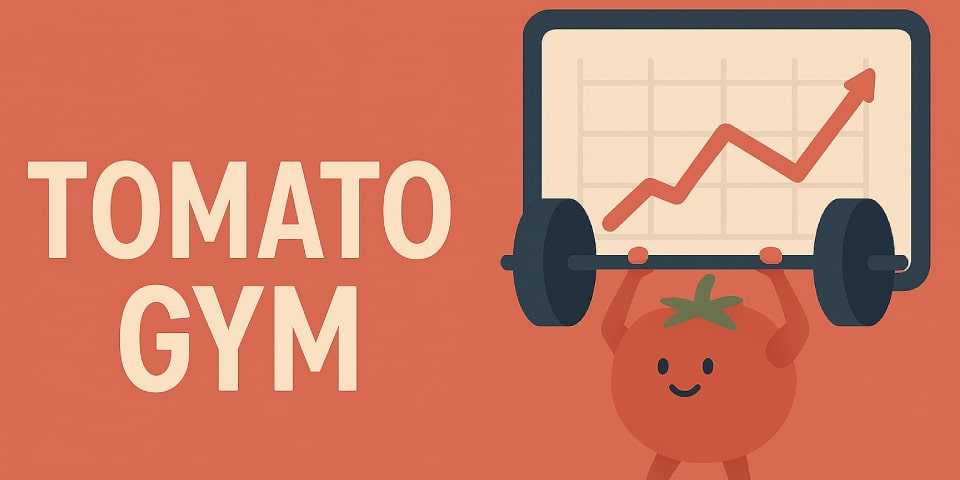
Tomato Gym
Introduction
Before we begin, “Tomato Gym” has nothing to do with tomatoes. The name was randomly chosen by the same artificial intelligence that created the cover for this page. That being said, we’re talking about an Android app that allows you to track your gym progress without using a data network.
Overview
In terms of timing, this project lasted a total of two months, from sketching an initial design on paper to the publication on GitHub. Being a personal project, there was no development team; I personally handled all phases of the project.
The underlying goal is very simple: to enable as many people as possible to track their gym progress without depending on external factors, so they can consult and modify this data anytime, anywhere.
Research
To conduct research that found real-world resonance, I narrowed down the pool of candidates to only those who frequent one or more gyms (including myself), since the service will not be used outside of that environment. The main points of reflection found during the interviews are the following:
- Little time to waste: If I have to save a progress, I don’t want to waste time navigating; I want to find what I’m looking for instantly after opening the app;
- Too expensive: Some competitor apps require the payment of a subscription that many people do not want to pay;
- Not all gyms have coverage: Some are underground or in places where the mobile network doesn’t work and this prevents me from saving or consulting my data.
In addition to this, I focused on the type of clientele I would have and noticed that a good percentage of them use Apple devices. This factor is certainly key to the research for my project, but given my unavailability to compile the application in a version for iOS, I was forced to make it available only for Android users.
Implemented Idea
The implemented idea includes the following features:
- Allows the user to set a period of time after which they will be notified to remember to increase the weights;
- The user can set a training program divided into one or more workouts which in turn include one or more exercises;
- The training programs are modifiable, copyable, savable, and overwritable;
- Allows you to see the current load compared to the initial load;
- Does not require an account and/or internet connection, all data is saved offline in the phone’s memory.
Conclusions
Certainly, it’s not a finished app, many interesting features could be added or existing features could be modified to make them more useful, but as a personal project it ends here.
From this experience, I learned that it is very important to base yourself on the needs of the end user, to understand them well and order them. I also learned that the most complex and articulated idea is not always the best; in this case, the chosen idea is the simplest and most intuitive.